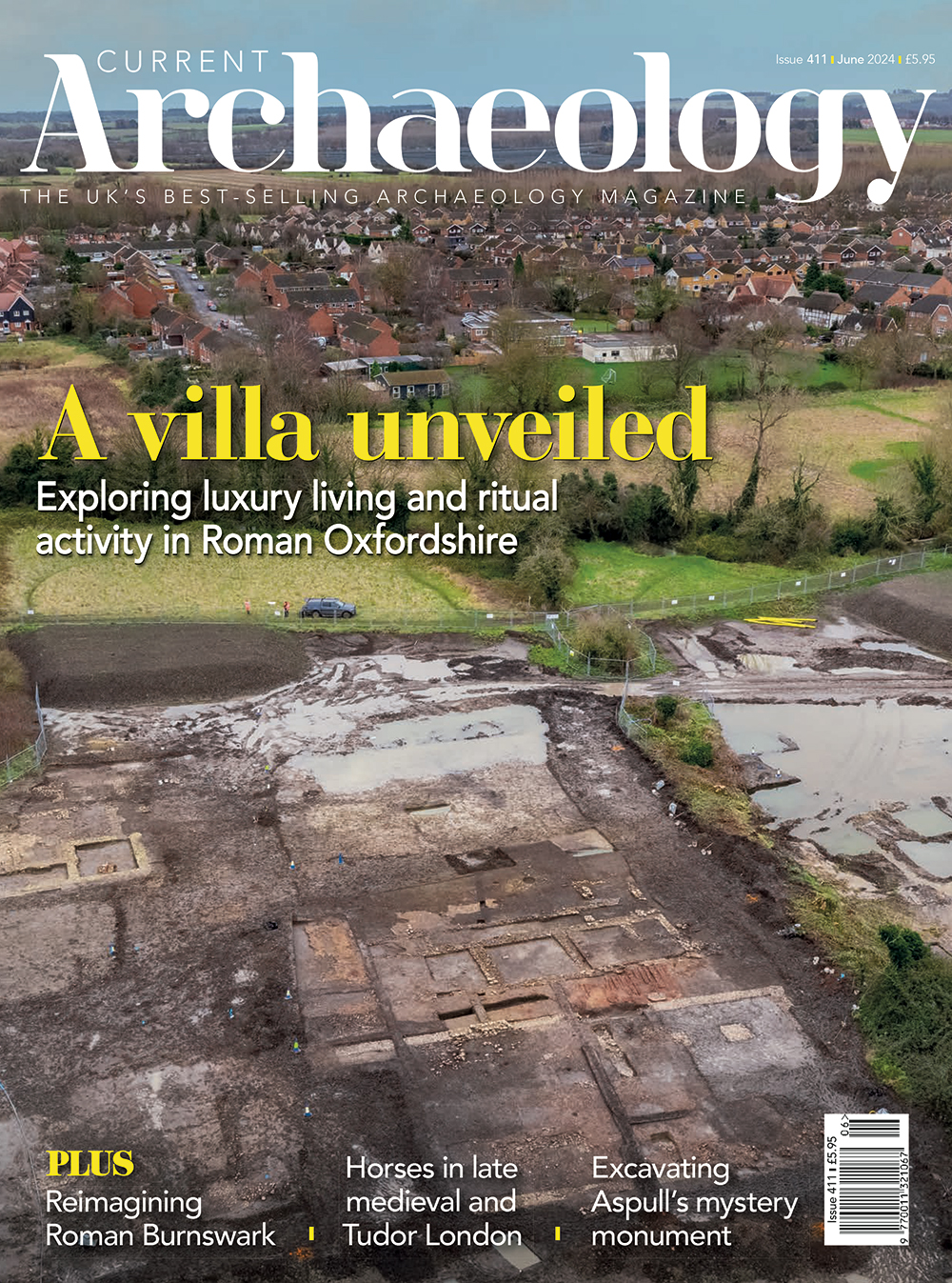This month’s cover feature takes us into rural Oxfordshire, where archaeological investigations ahead of the construction of a housing estate have uncovered the remains of a previously unknown Roman villa. The site’s story is still developing, but finds already paint a picture of an elegantly appointed residence, as well as activities ranging from the agricultural to the industrial – and hints of some rather more enigmatic practices.
The subject of our next feature is also unusual. In the mid-1990s, MoLAS (now MOLA) uncovered a unique burial ground in Westminster, used to dispose of the remains of dozens of horses in the late medieval and Tudor periods. Fast-forward to the present day, and cutting-edge scientific research at the University of Exeter has transformed our understanding of trade and travel networks stretching back over 500 years. We remain in London for our next article, edging forward into the period just after the Great Fire, when the city’s waterfront evolved into a commercial powerhouse. What can recent interdisciplinary research tell us about the rise and fall of this influential area?
The following feature turns the spotlight on an enigmatic prehistoric site at Aspull, near Wigan, which appears to have begun life as a Neolithic henge before being repurposed for Bronze Age burials.
Finally, we examine how digital technology can help to bring the past to life, focusing on an immersively detailed interpretation of the Roman assault on Burnswark Hill in Dumfriesshire.

